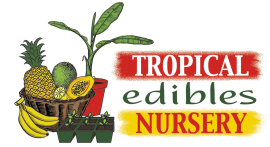TROPICAL EDIBLES: DREAMING OF AN ISLAND EDEN
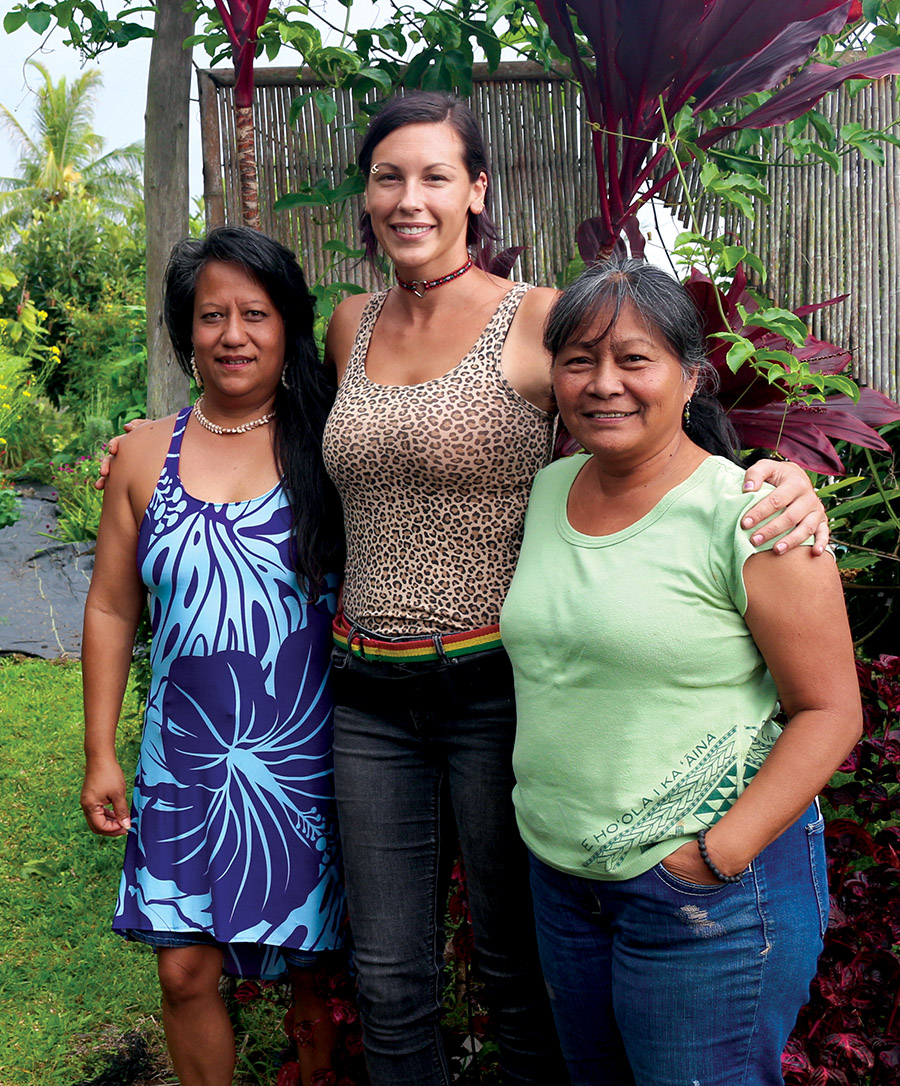
By Lara Hughes
The Dream
On the mauka (mountain) side of the Māmalahoa Highway on the slopes where Hualālai and Maunaloa meet overlooking Kealakekua Bay, you can find a garden vision brought to fruition. Hailing from different places around the globe and varying walks of life, the founders have one thing in common: a passion to help Hawai‘i Island become self-sustainable.
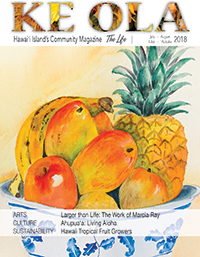
The Tropical Edibles Nursery crew proposes to help Hawai‘i achieve sustainability, in major part, through the propagation of edible plants in residential landscaping. It is interesting to note that much of what we plant and grow in our yards does not produce food. The contingent of plant aficionados who make up Tropical Edibles Nursery would like to change that, and they share a sense of urgency in the work they do, especially when it comes to the well-being of the island community. As Momi Subiono, resident ethnobotanist points out, “If something should happen to the only two harbors that we have here, how is our island going to sustain itself?” In fact, with approximately 90 percent of our food being imported, the question becomes quite relevant.
Momi is one of the part-time managers at Tropical Edibles Nursery along with Rayleen (Ray) Sopkin, their conservationist, and Maggie McDermont, the team’s agricultural specialist. Emmerich Grosch, originally from Germany, moved to Hawai‘i in 1967 and represents the rest of the team. He is the owner of Tropical Edibles Nursery and the biggest supporter of the work the three ladies are doing. “We want to supply the neighborhood with good products,” says Emmerich, “We want to achieve a very practical and very pleasant nursery where we can help farmers plant proper fruit trees and vegetables in their backyards.” Together the four make up the crew that represents the only privately owned nursery on the west side of the island.
Aside from the nursery, Emmerich also runs a store called the Captain Cook Trading Company, where he sells some of the produce from Tropical Edibles Nursery. The Captain Cook Trading Company boasts what some might consider a romantic return to the past with different options for payment such as exchanges, trading, and access to pulping, hulling, and roasting machinery in return for a promised portion of the final product. “We tried to develop the operation, making more facilities available for people,” says Emmerich, “Those who have small amounts of macadamia nuts, they can bring them to the factory and get them to a finished state without having to invest in the equipment. We want to be accommodating and be helpful…to be of service to the community.”
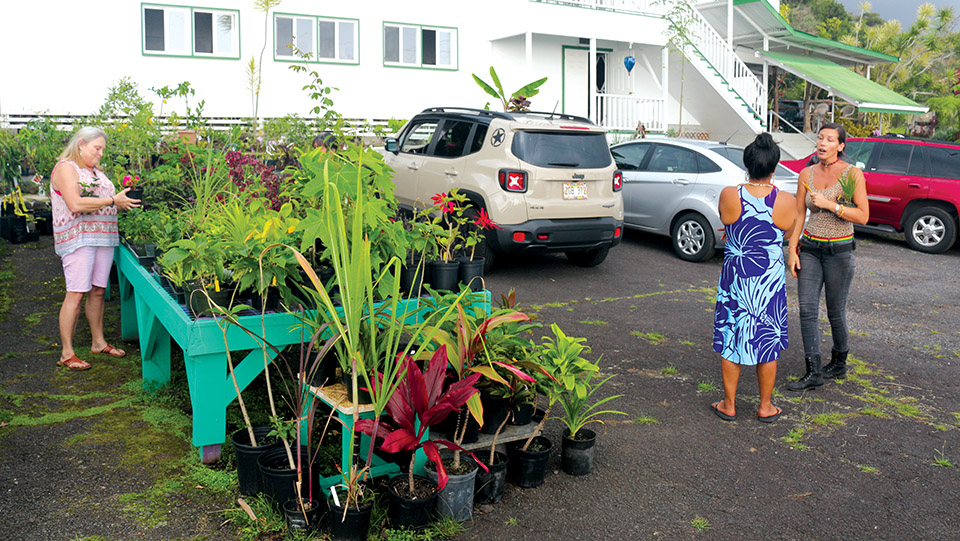
The Dreamers
Tropical Edibles Nursery opened seven years ago with Diana Duff at the helm. Diana later went on to open her own business, and Maggie joined the movement soon after in 2011. Coming from Pennsylvania to Hawai‘i, Maggie was instantly enamored with the tropical climate, lush soil, and rich environment present in the islands. She says that one of the main focuses at Tropical Edibles Nursery is to educate the community about which types of fruit trees will produce fruit at different elevations. “It’s really important when we talk to someone, that we get a feel for where they’re actually located, and if the tree is going to fruit for them. I don’t want to sell them a tree if it’s never going to produce for them.” Aside from her honesty in her work and with the community, there is another of Maggie’s preoccupations that she is very honest about: making wine. People say, “In vino veritas,” (there is truth in wine) and Maggie finds no exception to that rule. She uses a variety of different tropical fruits including starfruit, jaboticaba, jackfruit, and mango to make herself a steady personal supply of high-octane wine that really packs a punch. “It’s not for sale though,” she laughs.
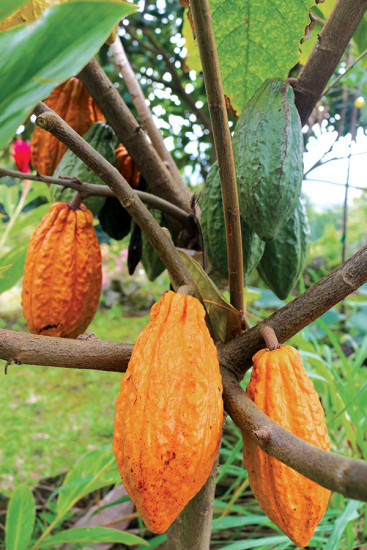
Momi has been involved with Tropical Edibles Nursery since the very beginning, in 2011. She commands an extensive range of knowledge regarding sustainability, native Hawaiian plants, and the overall nursery. She also shares the same interest as Maggie in educating the community. Momi lives down south in Ka‘ū where the climate is among the harshest on the island. Because of this, she is perfectly poised to give advice to a diverse spectrum of visitors to the garden. Momi was instrumental in bringing Ray on board, as they knew each other through projects that they had collaborated on in the past.
Ray is an independent landscaper and the newest of the three managers, having been there just more than a year. She says, “I always encourage people to put things on the landscape that belong there, like native plants that can survive without extra water and fertilizer.” She is highly motivated to conserve the native population of flora, while minimally impacting the environment. “It’s called xeriscaping,” adds Momi, “It’s using indigenous and endemic plants—you just put them in the ground and let them go.” The advantage is that there aren’t any extra additives being used, and you are helping keep native species alive and thriving. Plus, there are medicinal values found in many of the native Hawaiian plants. In fact, the women find varying uses for everything they produce at the nursery; it is not just necessarily for nutritional consumption.
An outside observer may even venture to call these women alchemists. Apart from her adventures in winemaking, Maggie concocted calendula oil from the flowers they grow in the garden, Ray made a mosquito spray when the dengue-fever outbreak rolled through, and Momi makes a natural salve out of ‘awa (Piper methysticum, also known as kava) that acts as a local anesthetic and anti-inflammatory agent. Not only do they talk the talk, they also walk the walk.
The three ladies together make a happily homogenous management team, each lending her own expertise and perspective to the nursery. “That’s how we run this place, nobody is really the boss,” says Momi. “We are all managers because we all work alone and whatever needs to be done, we all make the decisions and leave each other a little note.” Ray chimes in, “We have a communication log. I like it, we’re a pretty cohesive group and we get along.” Overall, they have divided up the workdays so each of them works 1–2 days per week at the nursery. Emmerich says, “They are a really good team, each of them has their own expertise.” Emmerich believes that in this way, they are able to help educate people to do the right thing agriculturally.
Making it Real
The nursery today has a garden area where people can come and pick their own fruits, vegetables, and herbs to purchase at a very affordable price. There are different trees including apple, olive, papaya, cacao, jaboticaba, and even plum. A culinary garden boasts an amalgam of edible flowers, herbs, and vegetables such as kale, beans, corn, tomatoes, cabbages, and arugula. There is a nursery area, where a majority of Tropical Edibles Nurseryʻs plant starters are raised from seed, with designated sections for native Hawaiian plants, medicinal plants, and fruit trees that the wandering guests to the garden can peruse.
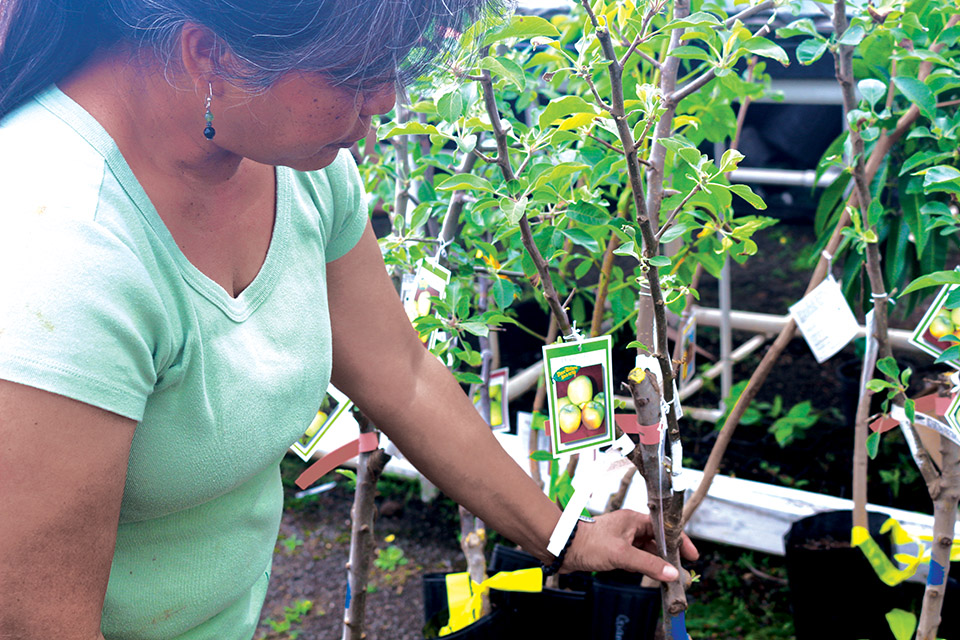
Centrally located is a 2-story house thatʻs been converted into a shop and education center with a view of Kealakekua Bay reaching out toward the horizon. That portion of the house is where they have held a range of workshops including courses on subjects such as permaculture and sustainability and events like seed exchanges and educational seminars for local school kids. “The Kohala Center came last summer,” says Momi. “The teacher David Sansone brought the kids here, and we walked them through the garden. We cleaned a bunch of seeds, which we call seedsploration, where we were teaching them how important the seeds were. We also made an oil out of herbs that they had picked themselves, which they got to take home.”
The nursery has also hosted classes on chocolate making dubbed Bean-to-Bar, where participants got to start with the raw cacao beans and go through the whole process of making their own chocolate bars. As for the finished product, “The thing was so strong,” says Momi, “Real chocolate has antioxidants and caffeine, so we could only eat a little bit of it at a time…it was the best chocolate I’ve ever tasted.”
Keeping the Dream Alive
The Tropical Edibles Nursery family wants to continue offering ethically sustainable and affordable food options for the Hawai‘i Island community and see people start gaining more awareness and taking action to plant more food producing varietals in their residential landscapes.
Emmerich says, “It’s a really wonderful place that has its own personality, its own attitude and it really is reflected in the girls that work there now. It’s a happy place.” ❖
Tropical Edibles Nursery, Captain Cook
Hours: 10am–4pm, Tuesday–Saturday
For more information: facebook.com/tropicalediblesnursery/
Mahalo Island Naturals – Local Agriculture Story Sponsor
Article curtesy of Keola Magazine
